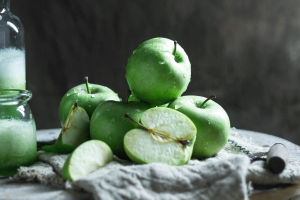Cocoa and coffee are two of the most beloved beverages in the world, but despite their shared role as hot drinks enjoyed globally, they differ significantly in their origins, flavors, preparation methods, and health effects.
Let's explore these differences more deeply to understand how they stand apart, yet both hold unique places in our daily lives!
1. Origin and Plant Source
Cocoa and coffee come from completely different plants. Cocoa is derived from the Theobroma cacao tree, which is native to the tropical regions of Central and South America. The plant produces seeds, known as cocoa beans, which are processed to create cocoa powder or cocoa butter, the main ingredients in chocolate.
In contrast, coffee comes from the Coffea genus, which includes species like Coffea arabica and Coffea canephora (robusta). Coffee beans are harvested from the cherries of the coffee plant, which grows in tropical and subtropical regions. The beans are then roasted to create the familiar coffee grounds that are brewed into coffee.
2. Flavor Profiles
The flavor of cocoa and coffee are distinct and influenced by their respective sources and preparation processes. Cocoa, especially when in its purest form, has a rich, somewhat bitter, earthy flavor, often described as deep and complex. It is used primarily in making chocolate and is known for its smooth texture, especially when combined with milk or sugar.
Coffee, on the other hand, is famous for its bold, slightly bitter flavor with notes ranging from nutty to fruity. The taste of coffee is heavily influenced by factors such as the coffee bean’s origin, the roast level, and the brewing method used. A light roast may offer fruity or floral notes, while a dark roast will have a stronger, more robust flavor with smoky undertones.
3. Caffeine Content
One of the most notable differences between cocoa and coffee is their caffeine content. Coffee is widely recognized for its stimulating effects due to its high caffeine levels. An 8-ounce cup of brewed coffee typically contains about 95 milligrams of caffeine, though this can vary depending on the strength of the brew and the type of coffee bean.
In contrast, cocoa contains much less caffeine. A standard serving of hot cocoa has approximately 10 milligrams of caffeine, which provides a mild lift compared to coffee. This makes cocoa a gentler option for those who are sensitive to caffeine or simply looking for a lighter stimulant.
4. Nutritional Composition
Both cocoa and coffee are rich in antioxidants, but they offer different nutrients. Cocoa, especially dark chocolate, is a powerful source of flavonoids, which are known for their heart-healthy properties. These antioxidants help improve blood flow, lower blood pressure, and boost brain function. Cocoa also contains magnesium, iron, and fiber, which contribute to its health benefits.
Coffee, while also rich in antioxidants, is more commonly associated with its caffeine and its ability to enhance alertness and focus. Studies suggest that coffee may help reduce the risk of certain diseases, including Parkinson's and Type 2 diabetes. However, coffee is typically lower in vitamins and minerals compared to cocoa. It does provide small amounts of B vitamins and potassium, but not in the same concentrations as cocoa.
5. Processing and Preparation
The methods used to process cocoa and coffee beans are quite different. Cocoa beans are fermented, dried, and roasted before being processed into cocoa powder or cocoa butter. These products are then used in the making of chocolate, hot cocoa, and other sweet treats. Cocoa powder, in its purest form, is often combined with sugar, milk, or cream to create the comforting hot chocolate drink.
Coffee beans undergo a similar process of harvesting and drying, but they are roasted to different degrees to achieve varying flavor profiles. The roasting process is crucial, as it brings out the rich, complex flavors of the coffee bean. After roasting, coffee beans are ground and brewed to create coffee. Brewing methods like drip, espresso, and French press further influence the flavor of the coffee.
6. Health Benefits and Considerations
While both cocoa and coffee offer health benefits, they impact the body differently. Cocoa's high concentration of flavonoids has been shown to improve cardiovascular health, reduce inflammation, and enhance cognitive function. It may also improve mood by increasing serotonin levels in the brain.
Coffee benefits are largely attributed to its caffeine content, which helps boost mental alertness, reduce fatigue, and improve concentration. Moderate coffee consumption has also been linked to a lower risk of several diseases, including certain types of cancer and liver conditions.
Lykkers, the differences between cocoa and coffee go beyond just taste. Cocoa, derived from the cacao tree, offers rich, earthy flavors and health benefits thanks to its antioxidant content, while coffee, from the coffee plant, is favored for its energizing caffeine and bold flavor profiles. Both have their unique places in the world of beverages, each providing a distinct experience—whether it's the smooth indulgence of hot cocoa or the energizing boost from a cup of coffee.
Depending on your needs and preferences, both can be enjoyed in various forms, from sweet treats to daily energy boosts, making them timeless favorites across the globe!
Coffee vs Cocoa: What is the Difference?
Video by The Coffee Vibe


